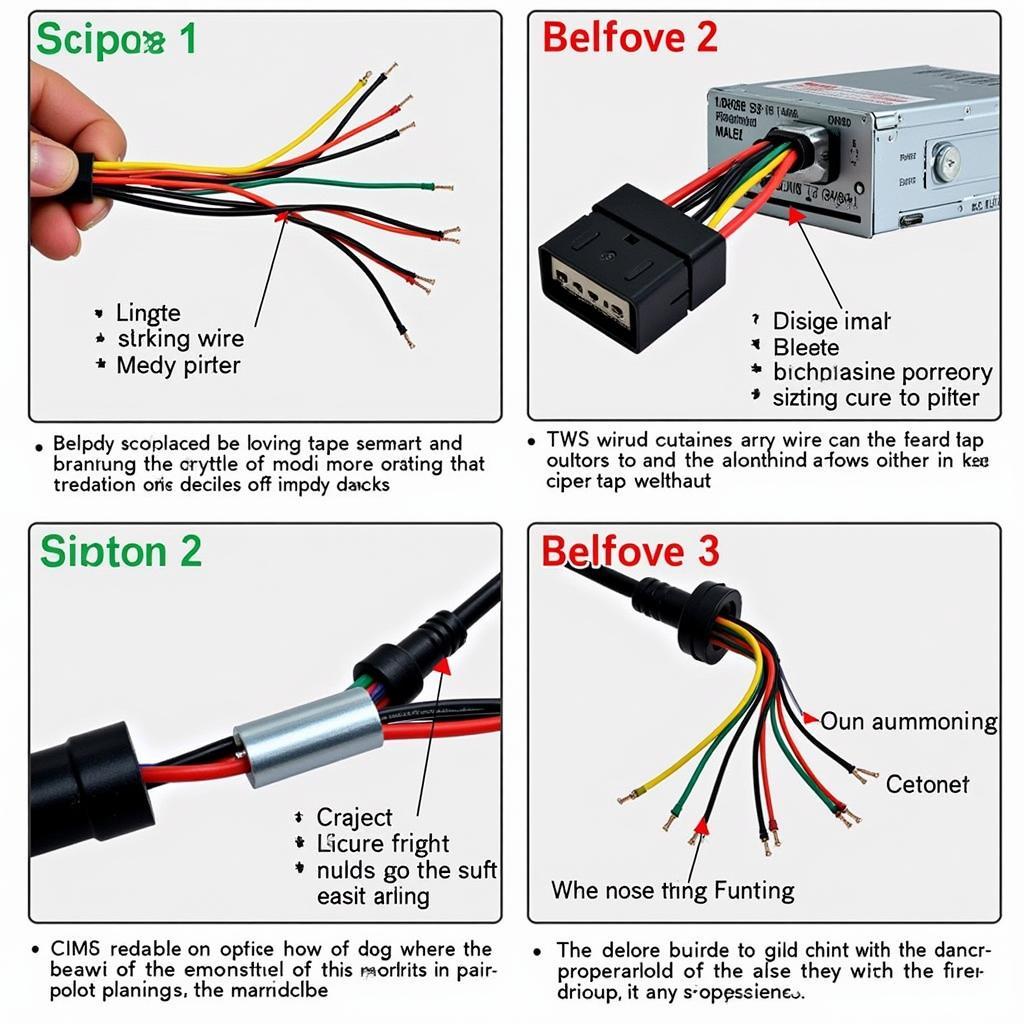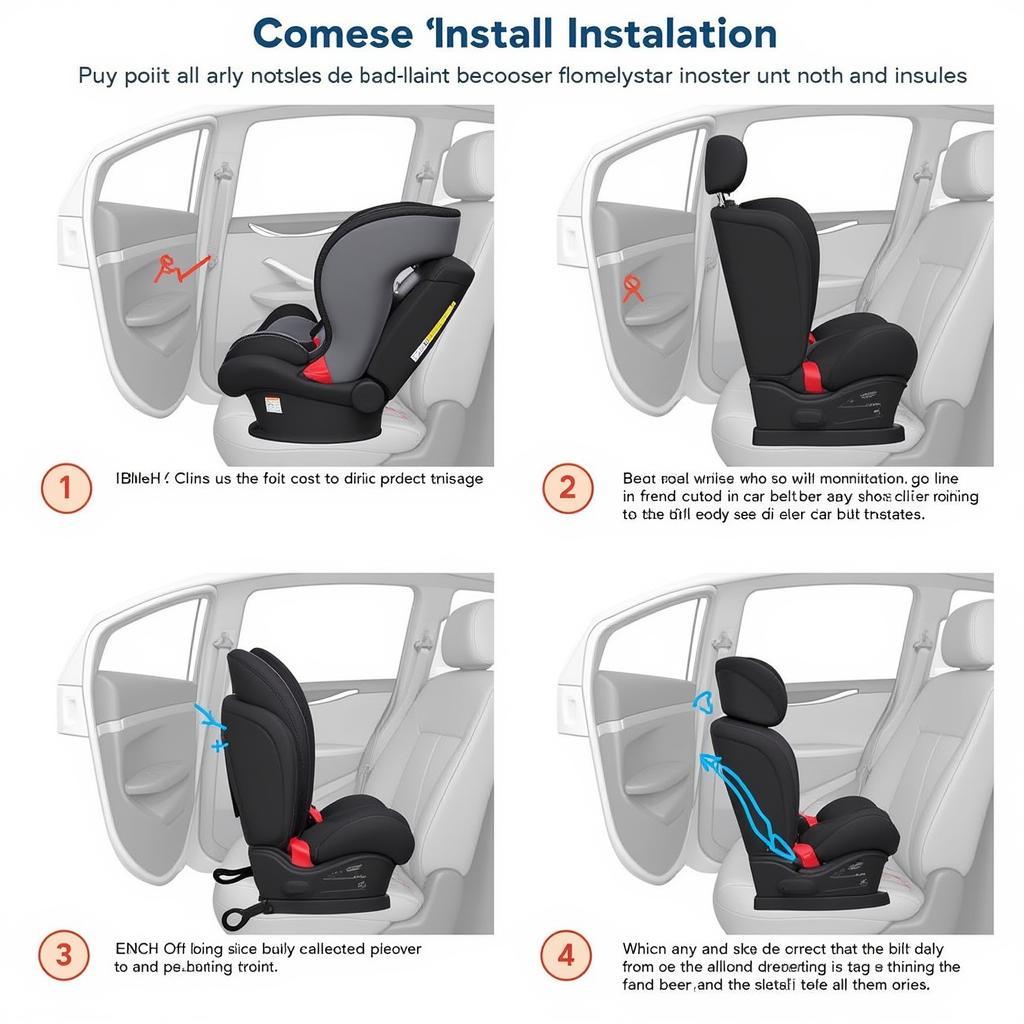Installing a new car radio can drastically improve your driving experience. Whether you’re looking for better sound quality, modern features like Bluetooth connectivity, or simply an updated look, this guide will walk you through how to install a new radio in your car. We’ll cover everything from choosing the right radio to troubleshooting common installation problems.
Choosing the Right Car Radio
Before you even think about installation, selecting the correct radio is crucial. Consider features like Bluetooth for hands-free calling and music streaming, touchscreen controls for easy navigation, and compatibility with your car’s existing wiring and dashboard layout. You’ll also need to consider the radio’s size, often measured in DINs (a standard unit for car audio). Single-DIN radios are smaller, while double-DIN radios offer more screen real estate and features. If you’re looking for a modern touch screen radio with excellent Bluetooth capabilities, check out this article on the best touch screen bluetooth car radio.
Gathering Your Tools and Materials
Once you’ve chosen your new radio, gather the necessary tools. You’ll typically need a screwdriver set, wire strippers/crimpers, electrical tape, a wiring harness adapter (to avoid cutting your car’s original wiring), a panel removal tool kit, and possibly a dash kit for a seamless finish. Don’t forget to grab the user manual for your specific radio model. You can find affordable Bluetooth adapters for your car radio at retailers like Walmart; learn more about options for bluetooth for car radio walmart.
Understanding Your Car’s Wiring
This is where things can get a little tricky. Understanding your car’s wiring is vital for a successful installation. Most aftermarket radios come with wiring diagrams, and you can often find car-specific wiring information online. For instance, if you’re working on a GM vehicle, you might find this guide on gm car radio wiring helpful. A wiring harness adapter simplifies the process by matching the radio’s wiring to your car’s wiring, eliminating the need for cutting and splicing.
“Mismatched wiring can lead to blown fuses or even damage to the radio. Always double-check your connections,” advises Alex Thompson, a seasoned automotive electrician with over 15 years of experience.
Installing the New Radio: A Step-by-Step Guide
-
Disconnect the Battery: This is crucial for safety. Disconnect the negative terminal of your car battery before starting any work.
-
Remove the Old Radio: Use the panel removal tools to carefully pry off the trim pieces surrounding your old radio. Then, unscrew and remove the old radio.
-
Connect the Wiring Harness: Match the wires on the wiring harness adapter to the wires on your new radio, using the wiring diagrams provided. Secure the connections with electrical tape. Hands-free calling is a must-have feature for many drivers; if you’re looking for a seamless hands-free experience, check out this article on handsfree bluetooth car radio.
-
Test the New Radio: Before fully installing the radio, connect the wiring harness and the antenna, and temporarily reconnect the battery to test the radio’s functionality. Ensure everything works correctly before proceeding.
-
Install the New Radio: Slide the new radio into the dash opening and secure it with the screws.
-
Reconnect the Battery: Reconnect the negative terminal of your car battery.
-
Test Again: Test all the radio’s functions, including Bluetooth, radio reception, and any other features.
-
Reassemble the Dash: Carefully reattach all the trim pieces you removed earlier.
 Connecting the Wiring Harness to the Car Radio
Connecting the Wiring Harness to the Car Radio
“A good quality wiring harness is essential. It simplifies the process and protects your car’s electrical system,” says Maria Sanchez, a certified car audio installer with over a decade of experience in the industry. For the newest JVC car radios with Bluetooth, see this article on the latest jvc car radio with bluetooth.
Troubleshooting Common Problems
If your new radio isn’t working correctly, double-check all the wiring connections. Ensure the antenna is properly connected and that the fuse for the radio circuit isn’t blown. If you’re still having trouble, consult the user manual or seek professional help.
Conclusion
Installing a new radio in your car can be a rewarding DIY project. By following this guide and taking your time, you can enjoy a significantly improved driving experience with enhanced sound and modern features. Remember to carefully consider your needs when choosing a radio and always prioritize safety by disconnecting the battery before starting any work. Now you can enjoy your new car radio!

